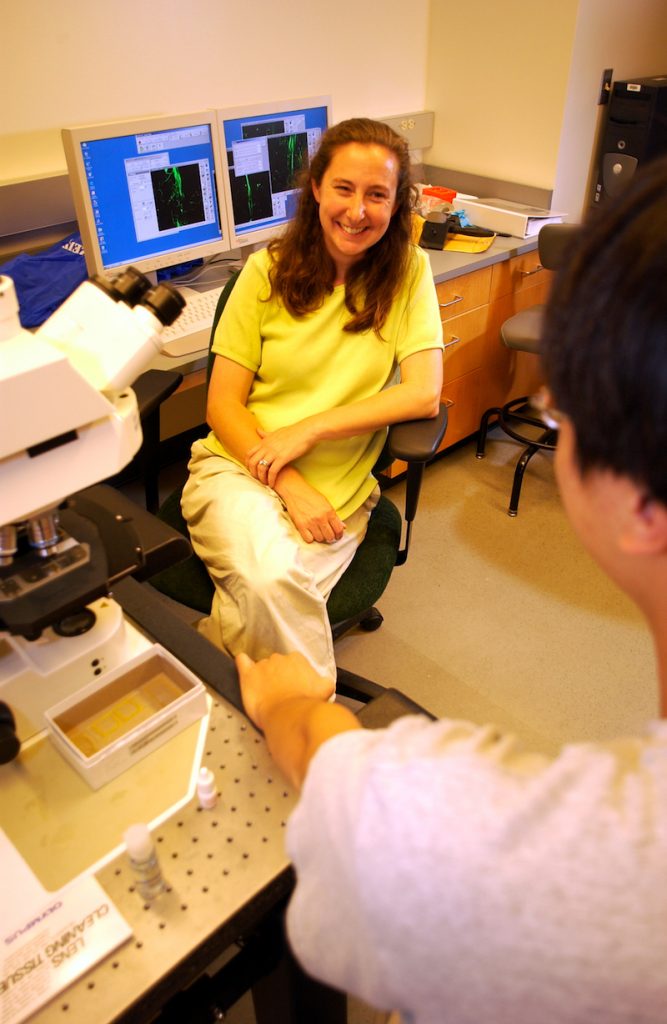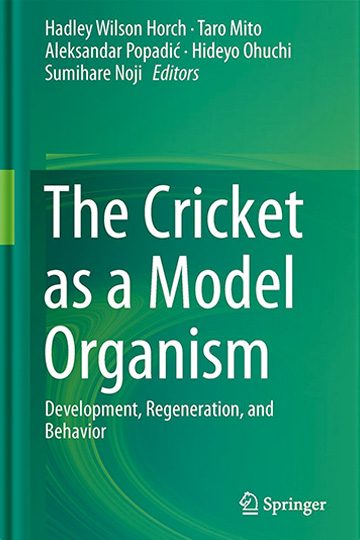Professor Horch on Why Crickets Matter (Not Least Because We Might Be Eating Them One Day)
By Rebecca Goldfine
The Cricket as a Model Organism: Development, Regeneration, and Behavior also argues that studying crickets, which are related to locusts, could lead to new pest controls. Also, as the human population grows and puts increasing pressure on our agricultural systems, it could behoove us to have better science about this edible insect.
The book is aimed for other scientists. But we asked Horch to answer a few non-technical questions about the volume — including how she prefers to eat her crickets.
Bowdoin: Why should the scientific community pay more attention to crickets? What kind of questions do you think cricket research could answer?
Hadley Horch: Right now most science research, and the research that is best funded, focuses on four main organisms (fruit flies, nematodes, zebrafish, and mice). Scientists have worked for decades to develop incredible tools to answer complicated and important questions in these species. It is just remarkable, and work in these animals has really helped us understand a lot of important things about biology.
However, these four animals represent a very narrow slice of the animal kingdom. If you look more broadly across the evolutionary tree, you will find animals that have evolved remarkable solutions to a ton of different problems that would otherwise limit their ability to survive. While we can learn an enormous amount from the four species I mention above, we are missing the chance to understand the vast diversity of biological solutions. This is where cricket research (and research in any animal different from the big four) comes in. The book is full of fascinating solutions the cricket has found for its particular environmental niche. They make their germ cells (their eggs and sperm) differently from fruit flies, their nervous systems develop a little differently, their circadian clocks are put together differently, the way they regenerate their legs or their nervous systems are different.

So exploring biological diversity is definitely one big reason, and specifically for the cricket, the book dives into how crickets do all the amazing things that they do! How do cricket brains tell cricket wings to make that pleasant chirping sound we associate with summer evenings? How do the wings that make that sound develop, and how similar or different is this from other insects? How do females hear male crickets chirping and recognize it as representing a potential mate and walk towards him? How do they regrow their legs after losing them? How do they fight and why? Lots of interesting questions are addressed in this book!
And finally, insects like crickets are being mass produced for food. The more we understand about their basic biology, the more efficiently we can probably grow them.
Bowdoin: What other pests belong to the order Orthoptera?
HH: The big bad pest in this order is the locust. The species Schistocerca
Bowdoin: I am very interested in crickets as
HH: We definitely already have cricket farms! There is a farm called Flukers [in Louisiana] that breeds crickets for bait and food, though mostly as food for other animals. These are the crickets you will typically see in a pet store, and folks will buy them to feed their lizards or snakes. There is a growing movement to use cricket protein for human food. Many see using insect protein as one of the simplest solutions for feeding a growing global population. The book does include methods for making transgenic crickets, so it is possible that some of these farms will try to do something to grow crickets bigger or with
If you really want to, you can eat cricket products today. You can buy cricket snack bars and cricket flour easily on the internet. There are several groups sinking significant resources into getting mass produced cricket protein up and running.
Bowdoin: What is your favorite cricket recipe?
HH: I have eaten a few different cricket things—cookies and bars, mostly—and they definitely all have the particular “nutty” flavor of cricket. When I visited Thailand a few years ago, I saw lots of fried or cooked crickets in street markets, and I regret not giving them a try. However, I am actually slightly allergic to my crickets. If I touch them and then touch my face, I will get really itchy. This has made me a little cautious about eating them. Can you imagine having to explain to an emergency room that you are there because you ate too many crickets?



